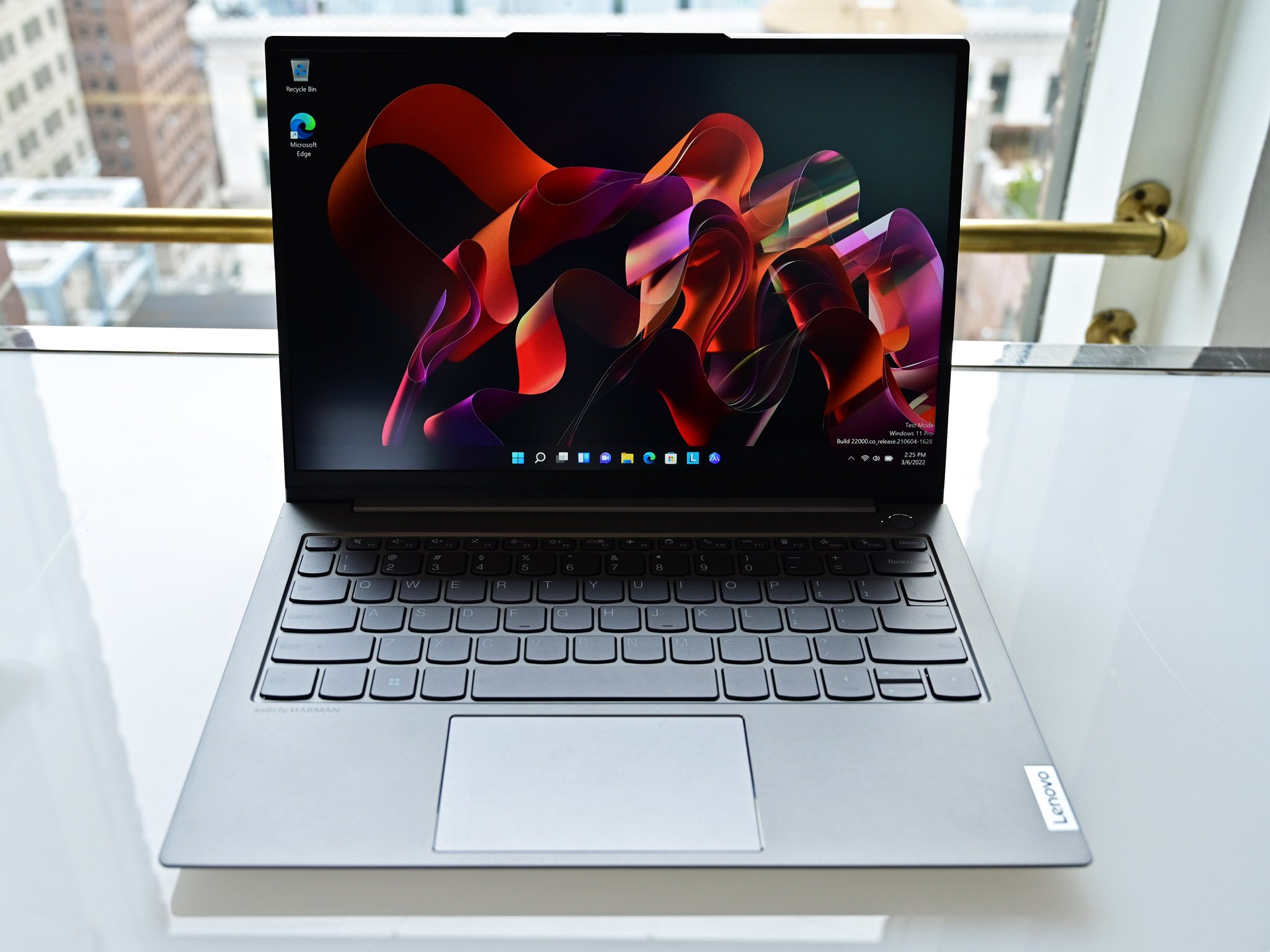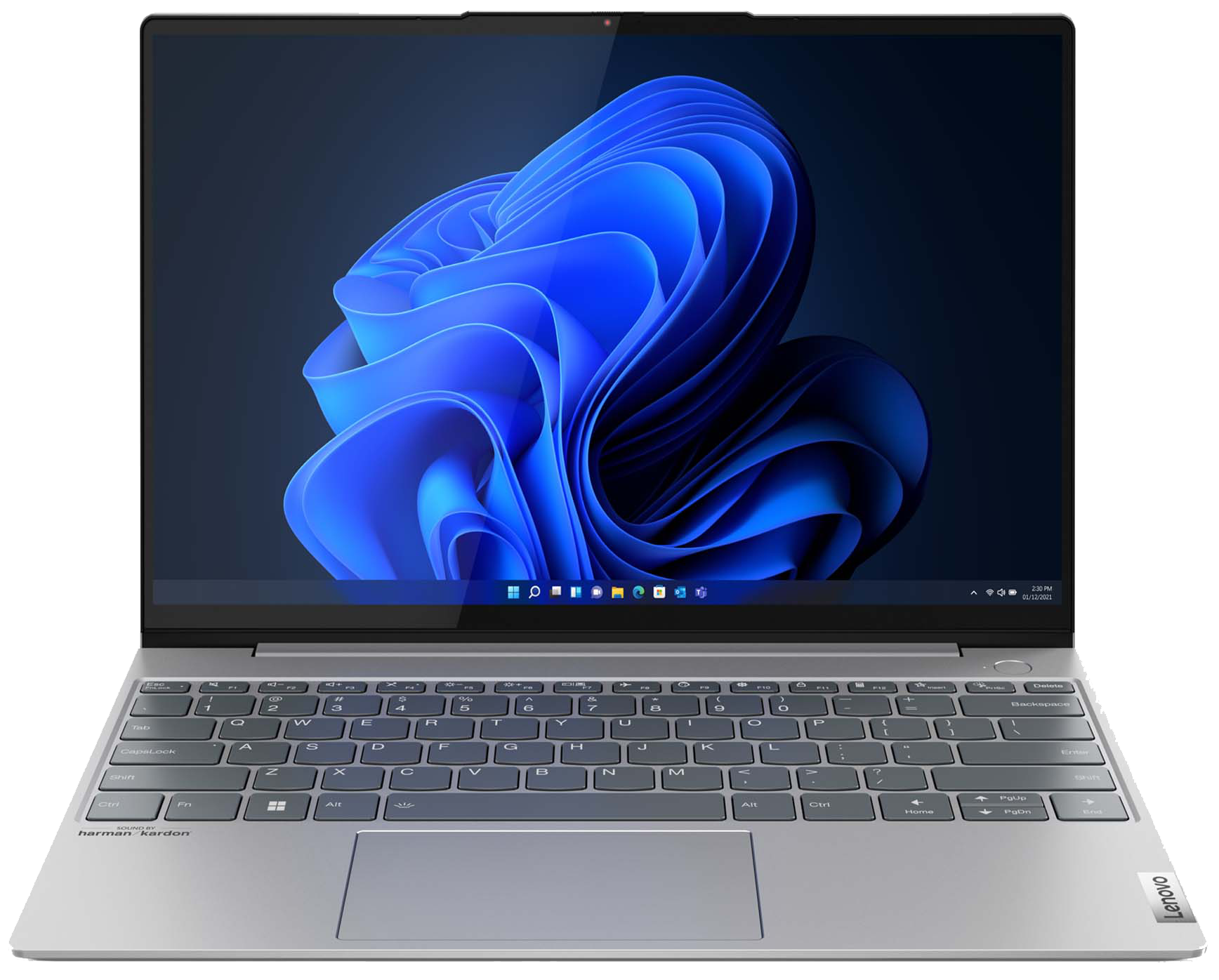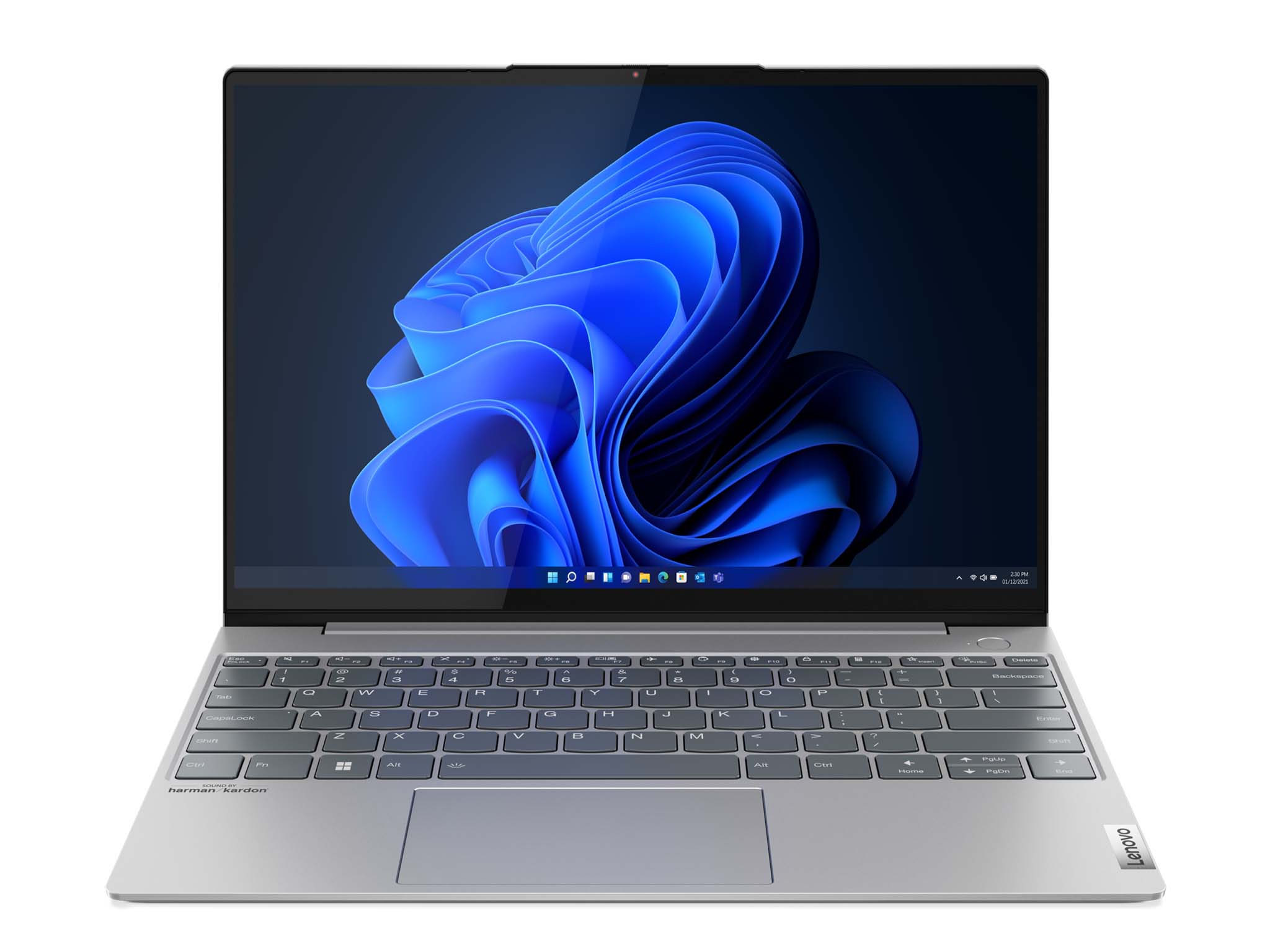

More features, more expensive
The ThinkBook 13x (Gen 2) is a 13.3-inch laptop cut out for business on the go. Its extra security features keep your data safe, its QHD+ screens offer Dolby Vision, and the slim aluminum build should fare well on the road. It costs more than the ThinkBook 13s (Gen 4), but it's the right choice for those who want a bit of extra verve.
Pros
- IR camera, human presence detection
- 16:10 displays with QHD+ resolution, Dolby Vision
- Dual 2W speakers with Dolby Atmos
- 12th Gen Intel Core CPUs, LPDDR5 RAM, PCIe 4.0 storage
Cons
- RGB camera is still 720p
- Costs more than the ThinkBook 13s (Gen 4)
- Limited port selection

Affordable SMB laptop
The ThinkBook 13s (Gen 4) is a more affordable 13.3-inch laptop for small and medium businesses. It doesn't have as many high-end security features, and it lacks Dolby Vision and Atmos, but it costs less and still delivers excellent performance and a more generous selection of ports.
Pros
- Starts at a lower price than the 13x (Gen 2)
- 12th Gen Intel Core CPUs, LPDDR5 RAM, PCIe 4.0 SSD
- Better port selection
- Optional FHD webcam with privacy shutter
Cons
- No IR camera, human presence detection
- No Dolby Vision, Dolby Atmos
- Slightly thicker and heavier
The latest generations of these laptops are still at the time of writing waiting on a full release, but that should happen any day. Both were expected to launch in April 2022. Check out Lenovo's official website to keep tabs on full availability. Check out more of the best Lenovo laptops if these ThinkBooks aren't quite what you're looking for.
ThinkBook 13x (Gen 2) vs. 13s (Gen 4) tech specs
These two laptops come from the same family and have a similar form factor. The ThinkBook 13x (Gen 2) is a more expensive laptop with extra features, while the ThinkBook 13s (Gen 4) is more affordable with fewer extra features. Here's a breakdown of the specifications you'll find in each laptop.
| Header Cell - Column 0 | ThinkBook 13x (Gen 2) | ThinkBook 13s (Gen 4) |
|---|---|---|
| OS | Windows 11 Pro | Windows 11 Pro |
| Processor | 12th Gen Intel Up to Core i7 | 12th Gen Intel Up to Core i7 |
| Graphics | Intel Iris Xe Integrated | Intel Iris Xe Integrated |
| Memory | Up to 32GB LPDDR5 Dual-channel | Up to 16GB LPDDR5 Dual-channel |
| Storage | Up to 2TB M.2 PCIe 4.0 SSD | Up to 512GB M.2 PCIe 4.0 SSD |
| Display | 13.3 inches 16:10 aspect ratio Touch, non-touch 2560x1600 (QHD+) IPS, anti-glare, 400 nits, 100% sRGB, Dolby Vision, TÜV Rheinland Eyesafe | 13.3 inches 16:10 aspect ratio 2560x1600 (QHD+) IPS, touch, 400 nits, TÜV Rheinland low blue light 2560x1600 (QHD+) IPS, non-touch, 300 nits, anti-glare, TÜV Rheinland low blue light |
| Camera | Front-facing 720p IR camera Privacy shutter Human presence detection | Front-facing 720p FHD upgrade available Privacy shutter |
| Wireless | Wi-Fi 6E Bluetooth 5.0 | Wi-Fi 6E Bluetooth 5.1 |
| Ports | Two Thunderbolt 4 3.5mm audio | Two Thunderbolt 4 USB-A 3.2 (Gen 1) HDMI 2.0 3.5mm audio |
| Security | dTPM 2.0 Fingerprint reader IR camera Privacy shutter Mirametrix Glance | TPM 2.0 Lock slot Fingerprint reader Privacy shutter |
| Audio | Dual 2W speakers Dolby Atmos Two noise-cancelling microphones | Dual 2W speakers Dolby Audio Two noise-cancelling microphones |
| Battery | 56Wh | 56W |
| Dimensions | 11.73 x 8.22 x 0.5 inches (298mm x 209mm x 12.9mm) | 11.69 x 8.31 x 0.59 inches (297mm x 211mm x 14.9mm) |
| Weight | From 2.5 pounds (1.21kg) | From 2.75 pounds (1.25kg) |
| Color | Dual-tone Cloud Grey | Dual-tone Cloud Grey Arctic Grey |
Design and features
These two ThinkBooks share a similar design, with an aluminum build and two-tone color scheme. The 13x (Gen 2) is available in a Cloud Grey color scheme, while the 13s (Gen 4) adds Arctic Grey. They're both around the same size, with a compact footprint closer to what you might expect from a 12-inch laptop. The 13x (Gen 2) is slightly thinner and slightly lighter; nevertheless, either laptop will make a great companion for the road.
The feature set — especially when it comes to security — is where these PCs begin to pull apart. The 13x (Gen 2) comes equipped standard with an IR camera that allows for human presence detection. Glance by Mirametrix is also on board, giving you an alert if it senses someone else reading your screen over a shoulder. The camera is only 720p, but it has a privacy shutter.
On the side of the ThinkBook 13s (Gen 4), you get an optional FHD camera but no IR portion for facial recognition. It does come with a privacy shutter. Both laptops have a fingerprint reader built into the power button.
Both laptops have backlit keyboards and Precision touchpads. You'll want to test out each keyboard yourself (if possible), as they do appear to be a bit different in terms of key shape and function scheme. Lenovo doesn't often make a bad keyboard, and you should find either laptop can keep up with your productivity needs.
One area where the ThinkBook 13s (Gen 4) excels is with port selection. Whereas the 13x (Gen 2) has just two Thunderbolt 4 ports and a 3.5mm audio jack, the 13s (Gen 4) tacks on USB-A 3.2 and HDMI 2.0. Either laptop will work great with a Thunderbolt 4 dock if you need to take connectivity further.
All the latest news, reviews, and guides for Windows and Xbox diehards.
For audio, you get dual 2W speakers with both ThinkBooks. The 13s (Gen 4) has Dolby Audio technology that enhances sound, while the 13x (Gen 2) has full Dolby Atmos support for 3D immersive audio. If you're going to be watching a lot of TV and movies, you might want to spring for the better sound setup. Rounding things out, both laptops have Wi-Fi 6E and Bluetooth 5 wireless connectivity.
Display
Lenovo went big with its 13.3-inch display choices for these laptops. The more affordable 13s (Gen 4) screens still come with a 16:10 aspect ratio, 2560x1600 (QHD+) resolution, and TÜV Rheinland certification for low blue light. There are two screens available. One is touch with 400 nits brightness; the other is non-touch with 300 nits.
The ThinkBook 13x (Gen 2) has similar options with a few key differences. Both 13.3-inch displays have a 2560x1600 resolution, a 16:10 aspect ratio, 400 nits brightness, and Dolby Vision support. One is touch, the other is non-touch, both with 100% sRGB color and TÜV Rheinland Eyesafe certification.
Price and performance
Intel's 12th Gen Core mobile processors up to a Core i7 are available in these ThinkBooks, along with LPDDR5 RAM and speedy PCIe 4.0 storage. However, the 13s (Gen 4) tops out at 16GB of RAM and 512GB of storage, while the 13x (Gen 2) goes up to 32GB of RAM and 2TB of storage. Both laptops have the same 56Wh battery.
The extra features in the ThinkBook 13x (Gen 2) push its starting price up to $1,099. The ThinkBook 13s (Gen 4) starts at a more modest $849. Both laptops have plenty of configurable options, and prices will climb as you add features. Neither laptop has been officially released, but we're expecting them any day. Check out our roundup of the best Windows laptops if you need something different.

Cale Hunt brings to Windows Central more than nine years of experience writing about laptops, PCs, accessories, games, and beyond. If it runs Windows or in some way complements the hardware, there’s a good chance he knows about it, has written about it, or is already busy testing it.



